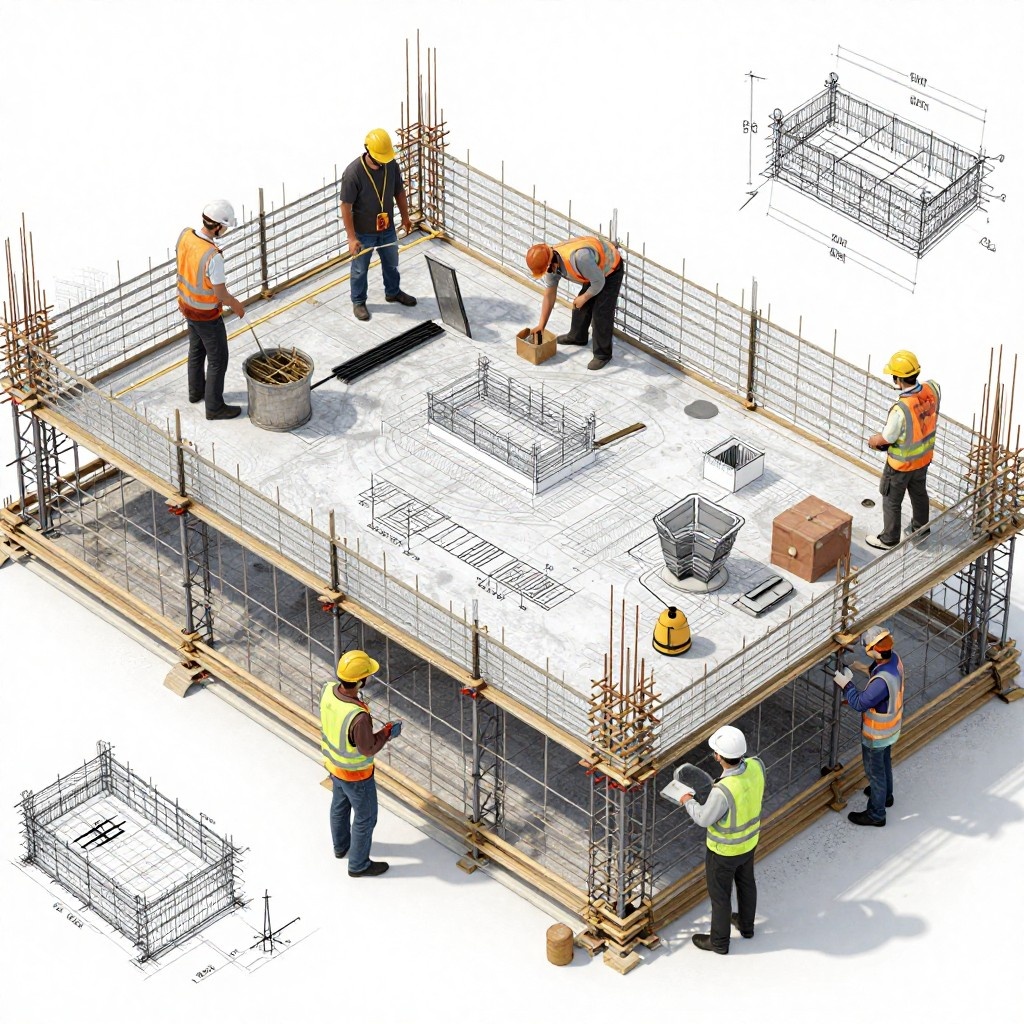What is BIM?
BIM is a common abbreviation used for building information modeling. BIM is one of the fastest growing approaches in the field of construction. BIM revolutionizes the AEC industry, enabling real-time collaboration across all project phases.
This 3D modeling approach unites architects, engineers, contractors, and developers in a single platform. BIM streamlines data creation and management which boosts visibility and decision-making. BIM's collaborative nature fosters cost savings, sustainability, and smarter choices throughout design, construction, and operation.
.avif)
What is BIM used for:
BIM digitally captures building data throughout its lifecycle. It unifies diverse information into detailed cloud-based models. Managers precisely estimate expenses, teams work together effortlessly, and architects visualize designs. BIM helps with planning and compliance with regulations throughout construction. Post-completion, it facilitates facility management and energy analysis. This comprehensive approach boosts efficiency, minimizes risks, and elevates project quality.
Design visualization
BIM's 3D models help us look into the details of the project vividly. This helps foresight the potential pitfalls beforehand, which grants us the power to make timely fixes. Visualization catalyzes smoother decision-making. It fosters teamwork which elevates project results.
.avif)
Cost estimation and budgeting
Cost estimation and budgeting is one of the most significant advantages of BIM. With BIM one can easily detect at an early stage if there might be any cost overruns. By merging 3D models with material data BIM delivers unparalleled accuracy throughout the project's lifecycle. With the real time financial insight, the team gets empowered to make wise decisions while planning the budget and thus control over expenses. This leads to transparent, efficient, and cost-effective project delivery.
Facility management
BIM has transformed facility management by providing a digital center for the whole structure. BIM provides the manager with all the systems, materials and equipment involved. With such in depth data, the managers can have deep assessments about the project, guiding them to form a solid maintenance strategy.
Coordination and Collaboration
One of the major advantages of BIM is it allows various stakeholders to work on a single 3D model. All the architects, engineers and owners can have access to a single centralized file where they can visualize how all the different systems in the projects are interacting with each other and can also identify if there are any conflicts which need to be catered. This fosters better and clear communication meanwhile reducing delays and rework.
What is the Process of BIM?

Plan
At the initial stage we collaborate with stakeholders to set the project goals and collect information. Further in order to obtain insights we fix our objectives and scope of the project. We further compile site information and rules to make wise decisions. All of this encompasses a strategy that guarantees a strong basis for the project's success.
Design
At this stage all the team members craft a meticulous digital blueprint integrating architecture, structure, and MEP systems. BIM helps us foster a cross-discipline teamwork to harmonize designs and spot issues early.
Build
At this stage detailed drawings and specs emerge from the model. As work progresses, and the project moves forward we start getting real-time updates which allows us to make swift adjustments. This approach transforms project management, turning plans into tangible structures with unparalleled accuracy and adaptability.
Operate
BIM models play a big role in the management of the project and is a vital tool for the facility managers. BIM models help the managers to efficiently look after the maintenance, repairs or renovations in the building if required. As the project moves forward and the structure evolves, these models adapt the new changes and provide new data to help them with the future decisions.
Components of BIM

In order to fully grasp the concept of BIM, one must break down it’s name “Building information management”.
Building
In BIM, building is not just a traditional structure with slab walls and beams..Here the word compromises the wide range of subjects, including infrastructure, engineering works, landscaping work and much more. This broad applicability of BIM ensures that it can be applied in various sectors.
Information
This is the pivotal component of BIM. It emphasizes on the importance of data we receive throughout the lifecycle of the project which helps in the management of the project. BIM generates information regarding costs, materials, schedules of every project which makes it easier for the people involved to make strategic decisions about the project and make advancements in the project.
Management
The management aspect of BIM refers to how the data provided is being processed and organized for the betterment of the project. Effective management ensures that all the information is transferred to all the concerned parties, may it be the stakeholders or the people working in the project, which ensures that the project is moving forward smoothly, all the timelines are being met and the progress is being tracked.
Benefits of of using BIM in construction
1. Upgraded Cooperation and Coordination
BIM advances collaboration among planners, designers, and project workers by offering a common stage, which prompts further developed correspondence and less false impressions.
2. Improved Facility Management
BIM serves as a useful resource for facility managers after construction, providing detailed information for operations, maintenance, and future renovations.
3. Reduced construction time and cost
By working with better preparation and limiting blunders, BIM decreases modification and smoothed out work processes, bringing about quicker project conveyance and cost reserve funds.
4. Better Insight into the Project
BIM offers perceptions and information examinations that assist partners with getting a handle on complex plan components, supporting informed dynamics all through the task.
5. Communication and Collaboration
Ongoing updates and an incorporated model upgrade correspondence among all gatherings, guaranteeing arrangement and mindfulness, which limits project delays.

6. Greater Sustainability
BIM performs energy examination and material enhancement, enabling more practical plan decisions and better asserting the board all through the structure's lifecycle.
7. Reduced Risk
By distinguishing potential issues right off the bat in the plan stage, BIM decreases gambles related with development blunders, security, and administrative consistency.
8. Full project visualization
3D demonstrating gives a total perspective on the task, permitting partners to imagine the ultimate result and make changes before development starts.
9. Improved Accuracy and Coordination
BIM improves the accuracy of plan and development documentation, limiting errors and guaranteeing successful coordination among all disciplines.

10. Future-Proof Models
BIM models can be refreshed and kept up with after some time, guaranteeing they stay significant for future remodels, extensions, or changes in building use, along these lines boosting long haul esteem.
Conclusion
BIM is causing revolution in the construction industry. It offers a complete approach to plan, build, and manage projects. It has an influence on teamwork among stakeholders and project workers, which leads to better project results. It also cuts down waste by reducing mistakes. As more firms start to use BIM tech, its many perks have become clear. These include higher productivity, clearer talks, and Eco-friendly methods. Getting used to BIM can take a while. But the long-term gains make it a key tool to succeed in today's building projects. These gains include smoother work flows and lower costs.
.avif)



